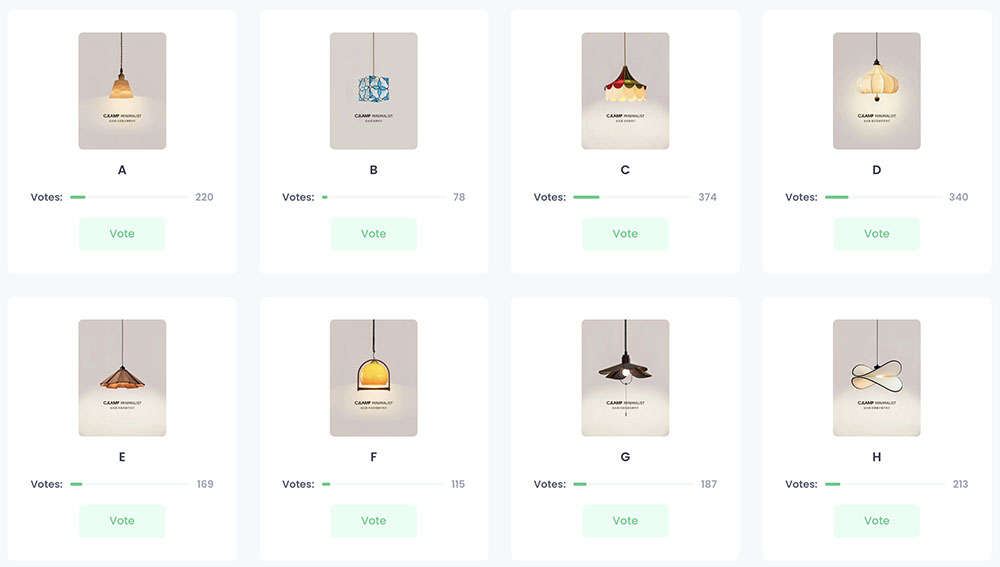
In a world saturated with information, attention is the new currency. And nothing captures attention quite like visuals. Whether it’s a snapshot of two outfits or a short video showcasing two vacation destinations, people are increasingly turning to image and video-based voting to make decisions—big and small. From social media polls to workplace feedback tools, visual voting has quietly become a part of our daily lives, influencing choices in fashion, food, travel, marketing, and even politics.
Fashion and Style: Crowdsourcing Confidence
Imagine standing in front of a mirror, torn between two outfits. You snap a photo of each, upload them to Instagram Stories, and ask your followers: “Which one should I wear tonight?” Within minutes, votes pour in. This isn’t just vanity—it’s a form of social validation and collective decision-making.
Apps like “Swelly” and “Wishbone” have capitalized on this behavior, allowing users to create side-by-side image polls on everything from hairstyles to sneakers. The feedback is instant, and often surprisingly insightful. For many, this becomes a way to test trends, gauge public taste, or simply feel more confident in their choices.
And now, platforms like MiniVote are taking this concept further—offering a sleek, user-friendly space where anyone can create image or video-based polls and share them instantly. Whether you’re choosing between two logos, two vacation spots, or two dinner recipes, MiniVote makes decision-making collaborative and fun.
Food Choices: Visual Menus and Crowd Favorites
Restaurants and food delivery platforms have embraced visual voting in subtle but powerful ways. Ever noticed how some dishes have a “most popular” tag or a star rating based on user photos? That’s visual voting in action. Platforms like Yelp and TripAdvisor allow users to upload images of their meals, and others vote by liking or commenting.
This not only helps customers decide what to order but also influences restaurant menus. If a dish consistently receives high visual engagement, it’s more likely to stay on the menu—or even become a signature item. In essence, diners are shaping culinary offerings through their cameras.
Travel Planning: Seeing Is Believing
When planning a trip, words alone rarely suffice. Travelers want to see the beach, the hotel room, the street food. Platforms like TikTok and Instagram have transformed travel decision-making into a visual experience. A short reel comparing two destinations—say, Bali vs. Santorini—can spark thousands of votes and comments.
Even travel agencies and airlines have started using visual polls to gauge interest in new routes or packages. “Would you rather explore Iceland’s glaciers or Thailand’s temples?” they ask, accompanied by stunning visuals. The results help shape marketing strategies and even future offerings.
MiniVote is also being used by travel bloggers and influencers to engage their audiences in trip planning. By posting side-by-side destination videos or hotel options, they invite followers to vote and feel part of the journey.
Workplace and Team Collaboration: Democratizing Decisions
Visual voting isn’t just for consumers—it’s making its way into the workplace. Teams use tools like Slack or Microsoft Teams to share mockups, prototypes, or presentation slides, asking colleagues to vote on preferred designs. This democratizes decision-making and speeds up feedback loops.
In remote work environments, where face-to-face interaction is limited, visual voting becomes a bridge. It allows teams to express preferences quickly and clearly, reducing ambiguity and fostering collaboration. Plus, it’s more engaging than a long email thread.
MiniVote offers a lightweight solution for teams to gather quick visual feedback—no login required, no app download. Just upload, share, and let the votes roll in.
Social Media and Entertainment: Engagement Through Choice
Platforms like Instagram, TikTok, and YouTube have built-in features that encourage visual voting. Creators often post two versions of a thumbnail or two clips and ask viewers to choose. This not only boosts engagement but also gives audiences a sense of ownership.
Reality shows and live streams have taken this further. Viewers vote in real time—using emojis, reactions, or polls—to influence outcomes. Whether it’s choosing a contestant to save or deciding the next challenge, visual voting turns passive viewers into active participants.
Civic Engagement and Public Opinion: A New Frontier
While traditional voting remains text-heavy and formal, some civic platforms are experimenting with visual formats. For example, city planning apps may show two proposed designs for a park and ask residents to vote. This makes participation more intuitive and accessible, especially for younger demographics.
Visual voting can also combat misinformation. By presenting verified images or videos and asking users to vote on credibility, platforms can crowdsource fact-checking in a more engaging way.
Challenges and Ethical Considerations
Of course, visual voting isn’t without its pitfalls. It can oversimplify complex decisions, favor aesthetics over substance, and even reinforce biases. For instance, a visually appealing candidate in a job poll might get more votes than a qualified one with a less polished photo.
There’s also the issue of manipulation. Filters, editing, and selective framing can skew perception. As visual voting becomes more prevalent, platforms must ensure transparency and educate users about these dynamics.
Conclusion: A Lens into Collective Choice
Visual voting is more than a trend—it’s a reflection of how we process information and make decisions in a digital age. It taps into our instinct to compare, our desire for validation, and our love of visuals. Whether choosing a meal, a dress, or a destination, we’re increasingly relying on the crowd’s eye to guide us.
And while it’s not perfect, it offers a fascinating glimpse into collective behavior. The next time you vote on a photo or video, remember: you’re not just expressing a preference—you’re shaping culture.
If you’re ready to experience visual voting in action, try creating your own poll at MiniVote—and let the crowd help you decide.
